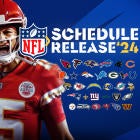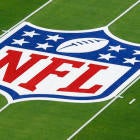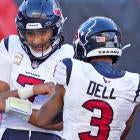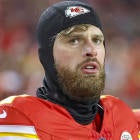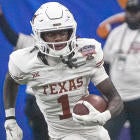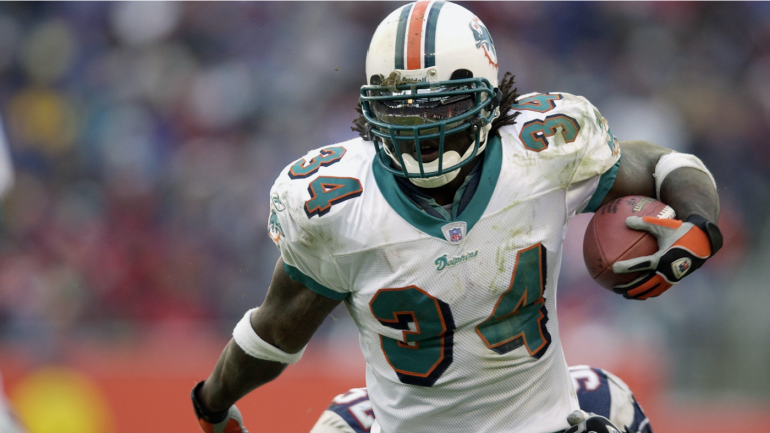
While it is rare, Ezekiel Elliott isn't in uncharted waters. The Dallas Cowboys' running back is just the latest notable player to return to the franchise that is most synonymous with his NFL career.
Elliott joins a list of notable players that includes James Harrison, Randy Moss and Larry Csonka, among others. Harrison, who had actually retired after one season with the Bengals in 2013, played nearly four more seasons in Pittsburgh after re-joining the team in 2014. Moss had a cup of coffee in Minnesota late in his career (2010), while Csonka capped off his Hall of Fame career with a solid final season with the Dolphins, the franchise he had helped lead to back-to-back titles.
Ultimately, these three players didn't make the cut of the five best second stints in NFL history, a list Elliott will look to join this season with the Cowboys. Fortunately for Elliott, the list includes two players who played his position.
5. TE Shannon Sharpe: Broncos (2002-2003)
Sharpe emerged as an all-time great at the tight end position during his first go-around in Denver from 1990-99. He won two Super Bowl titles during that span and was named to the Pro Bowl each year from 1992-98.
After a successful two-year run in Baltimore that included his third Super Bowl win, Sharpe played his final two seasons in Denver. During his final season, Sharpe had five more touchdown catches than his next-closest teammate, Rod Smith. Sharpe's success that season helped the Broncos capture a wild card playoff berth.
4. RB Ricky Williams: Dolphins (2005, 2007-09)
One of the most well-knock comeback stories in NFL history. Williams had not two but three separate stints with the Dolphins, the franchise where he won the league rushing title in 2002. After abruptly retiring in 2004, Williams returned in 2005 and teamed up with Ronnie Brown to form one of the NFL's best running back duos.
A suspension and an injury limited Williams to just one game with the Dolphins during the 2006-07 seasons. He returned in a big way in 2008, though, executing Miami's surprise wild cat offense that contributed to the team's surprising division title. In 2009, then-33-year-old Williams rushed for 1,121 yards and 11 touchdowns. Williams, who is second to only Csonka in Miami's career rushing list, had another solid year in 2010 before finishing his career in Baltimore.
Week 11 great performances: November 19, 2009 RB Ricky Williams scores 3 TD’s & runs for 119 as Dolphins win at Carolina 24-17 pic.twitter.com/BVLHf3r8jA
— Dolphins History (@DolphinsHistory) November 14, 2022
3. LB Jeremiah Trotter: Eagles (2004-06)
Trotter had established himself as a Pro Bowl player when he went from Philadelphia to Washington in 2002. Trotter played well in Washington, but he was released just two years into his seven-year deal.
Trotter was quickly scooped up in free agency by the Eagles, who were coming off a season where their run defense went from ninth in the league in 2002 to 22nd. With Trotter back in the fold, the Eagles boasted the NFL's second-best scoring defense in 2004, which was also the year that the franchise snapped it's 24-year Super Bowl drought.
Trotter, who was a Pro Bowler during the 2004 season, was named to the Pro Bowl again in 2005 after filling the stat sheet with 121 tackles, 1 interception, 2 forced fumbles and 10 pass breakups.
2. QB Fran Tarkenton: Vikings (1972-78)
It would be hard to argue with you if you said that Tarkenton had the best second stint with a team in NFL history. After two Pro Bowl nods during his first six seasons in Minnesota (1961-66), Tarkenton led Minnesota to three Super Bowls over a four-year span from 1973-76. During that span, he earned three consecutive Pro Bowl nods and was named the league's MVP in 1975.
December 20, 1975#Bills #Vikings @Fran_Tarkenton becomes the All-Time #NFL TD pass 👑 passing Johnny Unitas.
— Old Time Football 🏈 (@Ol_TimeFootball) December 21, 2023
A fan hits Chuck Foreman in the 👁️ with a snowball, ending his day 😡
35-13 #Vikings #Skol pic.twitter.com/PrB2mD1OYW
In his final season (1978), the then 38-year-old Tarkenton led the NFL in attempts, completions and passing yards, as well as in interceptions. He retired after that season as the NFL's career passing leader, a record he would keep until Dan Marino finally broke it in 1995.
So, why is Tarkenton not No. 1? He was unable to do the one thing that the only person in front of him on this list was able to accomplish.
1. RB John Riggins: Washington (1981-85)
Riggins had consecutive 1,000-yard rushing seasons with Washington before retiring at the end of the 1979 season. He returned to the team in 1981, telling the media at the time: "I'm board, I'm broke, I'm back."
Riggins wasn't as good as he was prior to his brief retirement; he was better. He had one of the greatest individual postseasons in NFL history in 1982. In four postseason games, Riggins rushed for 610 yards, which was more yards than he rushed for during the nine-game regular season. He was named the MVP of Super Bowl XVII after setting Super Bowl records for carries (38, which still stands) and rushing yards (166, which has been surpassed twice) in leading Washington to a 27-17 win over Miami.
On this date in 1983, John Riggins runs roughshod all over the Miami Dolphins in Super Bowl XVII.
— Honest☘️Larry (@HonestLarry1) January 30, 2024
pic.twitter.com/bWfW06MFlR
A year later, Riggins scored a then-NFL record 24 rushing touchdowns whle helping Washington get back to the Super Bowl. He again led the league in touchdown runs in 1984 before retiring for good at the end of the 1985 season. Riggins was inducted in the Pro Football Hall of Fame in his first year of eligibility.















